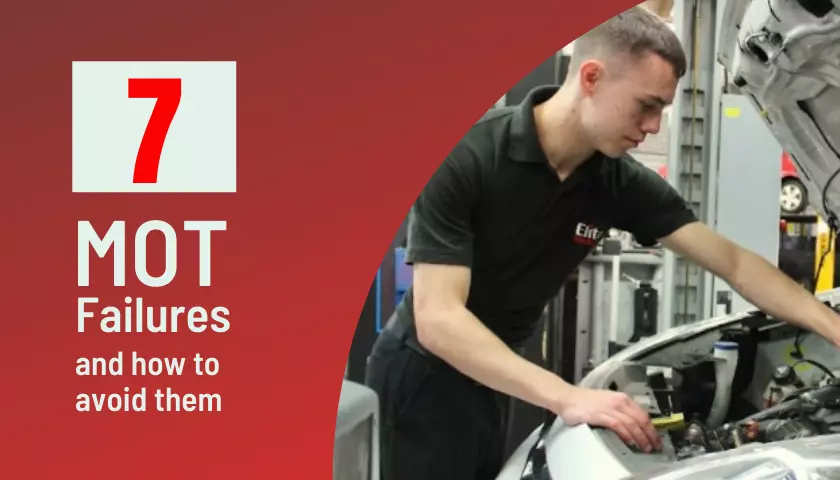
How To Avoid The Five Most Common MOT Failures
When it comes to MOTs, not all vehicle owners understand the important role they play in overall safety. Many people see it as a hindrance where, in fact, it is the best way to ensure that your vehicle is roadworthy and safe to operate. With these checks, however, come MOT failures and here are some of the most common along with some insider tips on how a few small checks can make a big difference.
What Is An MOT?
An MOT is a basic test of roadworthiness and should not be confused with a vehicle health or safety check. MOTs determine whether your car is safe to drive on the road and will not reveal any underlying issues that may cause a breakdown, including clutch or engine problems. Once a car is registered as new, an MOT is required after three years but from there, it is a legal requirement to do so annually.
If you are caught driving with an expired MOT or a host of MOT failures without proof of having it fixed, you may face hefty fines and risk invalidating your insurance. The good news is you can avoid this by booking your MOT in advance. At Elite Garages, you can join the Member’s Club and receive FREE MOT Reminders so you never forget your MOT again.
Related: What Is Checked During An MOT?
Common MOT Failures
While there are many reasons for MOT failures, they are often minor but some can be more serious. Here is a breakdown of the most common MOT failures and how to avoid them to the best of your ability.
1. Faulty Lights and Signalling
Many MOT failures stem from issues with the car’s lights, particularly signalling and brake lights. This can be as simple as a blown bulb or something more serious like faulty wiring. To make sure your lights are working, switch them on and walk around your car.
See if your indicators are flashing as they should, check the brake lights and remember the number plate light as well. While you’re at it, check the condition of your lights as plastic lenses can get misty. If that’s the case, you may want to consider buying a kit to clean your lights before booking your MOT.
2. Suspension MOT Failures
The problem with a faulty suspension is that the issue might be hidden out of sight. This is often a leaky shock absorber or even a snapped spring. The only way to identify potential issues is to listen to noises your car makes during everyday driving. Pay especially close attention to any unusual ‘clunks’ when cornering or driving over bumpy roads.
Park your car and spend some time looking at whether it sits level. If it’s too high or too low in one corner, you need to have it checked. Next, walk around the car and push down on each corner. If it goes back to its normal level when you let go without ‘bouncing’ up and down a few times, your suspension should be fine.
3. MOT Failures From Faulty Brakes
Everyone should know how important brakes are and yet, there are many MOT failures as a result of issues with the braking system. This is somewhat disconcerting especially since most faults with brakes are fairly obvious.
Listen for squealing or grinding noises from your brakes as both are signs that the brake pads are running low. When braking, your car should stop in a straight line and not pull to one side. Make sure to inspect the discs and pads which may require you to remove the wheel, or you might be able to look through the spokes.
Check if the surface of the brake disc is smooth and how thick the brake pads are. Many MOT failures also occur due to issues with the handbrake so before the test, stop your car on a hill and apply the handbrake. If it doesn’t hold the car, it could be in need of an adjustment.
4. MOT Fails Due To Bald Or Worn Tyres
Any tyre with a tread below 1.6 mm will result in an automatic MOT failure. As with brakes, tyres are crucial as they are the only parts of the car making contact with the road. Never let the tread reach the legal limit and rather replace them beforehand as some experts suggest 3 mm should be the cut-off.
To check your tyre tread, use a 20p coin and inspect the tyre across the central three quarters. If you can see the outer band of the coin, the tread is too low. Don’t just rely on the visible tread as you should feel inside the tyre. Uneven wear could indicate wheel alignment issues or improper inflation.
While checking the tread, look for any physical damage such as lumps or cuts as it could result in a tyre blowout. Other checks include making sure of the speed rating, whether the correct tyres are fitted and if the sizes match across each axle.
5. Issues Affecting Visibility Of The Road
The ability to clearly see the road ahead is vital for safe driving but somehow many MOT failures are from issues affecting the driver’s view of the road. This could include things obstructing the windscreen such as aftermarket GPS, unnecessarily big air fresheners and cracks or chips within the driver’s line of sight.
They even check whether the bonnet can close properly and shut securely. If there is any risk of the bonnet popping open and blocking the driver’s view, it will fail the MOT. Lastly, make sure to check whether the windscreen wipers are working properly and top up your windscreen washer fluid before the test.
Other Common MOT Failures Worth Noting
Damaged Towbar
Some may not know this but a tower has been part of the MOT since 2009 when the laws changed. A towbar should be fitted by a professional and you should regularly check it for damage, corrosion, cracks or fractures.
Unreadable Registration Plates
For legal reasons, vehicle registration plates must be clearly visible which is one of the MOT failures people may not be aware of. If a registration plate is damaged or unreadable in any way, your car will fail the MOT. Even something as small as a faulty registration plate light can result in an MOT fail.
Book Your MOT Today
While an MOT may seem inconvenient, it’s an essential part of owning and driving a car. It ensures that your car is safe to operate which helps protect you, your passengers and other road users.
To avoid MOT failures, do your part and book your MOT on time every year. Remember to perform regular vehicle services to keep your car running smoother for longer and always drive on good quality tyres.
About Us
Opening Times
Saturday : 8:30–4:00
Sunday : closed
More Information
Contact UsCustomer Information Pack
Check MOT Due Date
Free MOT reminder
Careers


